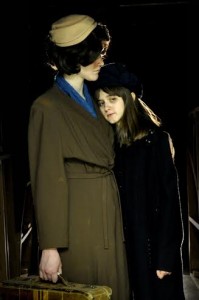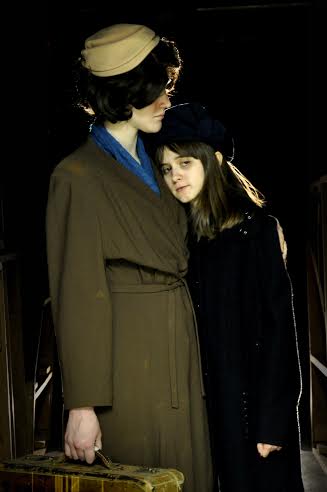
The much anticipated ‘Kindertransport’ came to life for the first time in Ohio Wesleyan’s Chappelear Drama Center’s Studio Theatre last Wednesday evening.
In accordance with its namesake, ‘Kindertransport’–by Diane Samuels– draws inspiration from the many Jewish children who were pushed out of their homes in Germany before World War II in the hopes of ensuring their safety. The play focuses specifically on one child, Eva, who was relocated to England and forced to make a new life for herself.
‘Kindertransport’ fluidly travels between different times in Eva’s life; beginning with her evacuation of Germany at 9 years old, to adult life in an English home raising a daughter of her own.
Junior Katie Patrick, a non-theatre major, took on the role of portraying Eva between the ages of 9 and 17. Patrick, never having performed in an OWU play before ‘Kindertransport’, showed incredible talent within the challenging character. Believably transforming from an innocent child to a responsible and strong-willed adolescent between the opening bell and the closing applause is no easy task.
Freshman Rachel Scherrer played adult Eva, or technically Evelyn; after adapting to life in England, Eva felt the need to assimilate by claiming naturalization papers and changing her name to one with less German flair. Patrick and Scherrer established a cohesive chemistry on stage that allowed audiences to easily see how the younger developed into her older version.
A play with such a flexible timeline would seem nearly impossible to communicate on a stage the size of the Chappelear Studio. But any difficulties that the cast and crew may have had were virtually untraceable.
Freshman Hailey LaRoe served as the show’s assistant master electrician. LaRoe said the crew heavily relied on lights and sound to portray any change of setting throughout the production.
“The lights are designed to isolate different areas of a stage, and you can also use them to imply different settings,” LaRoe said.
She said that in one scene, two of the main characters are meant to be on a boating dock. To portray that setting the lights were given a blue-green tint and muffled sounds of boat horns played in the background.
“It was a lot of hours physically moving the different lighting instruments,” LaRoe said. “That is really hard to do in the Studio Theatre, it requires more physical effort.”
LaRoe said even though ‘Kindertransport’ required extensive hours of preparation, it was worth it.
“It was cool to see my work in the end,” she said. “It is one of the reasons I like doing theatre work, you get to actually see the final product that you helped to produce.”
Junior Margot Reed, who played Eva’s mother Helga, said ‘Kindertransport’ was one of the most rewarding productions she has been a part of during her time in the theatre.
“It was one of the best pieces of drama that we have had in the department,” Reed said.
“It is a really influential piece of theatre and I am glad that I can say it is on my resume.”
Reed explained when the cast and crew first began production, they weren’t entirely sure how the play would turn out. “I think we were all kind of confused how it would be done since it takes place across so many timelines,” Reed said. “But I think that it has become such a solid piece of work. None of use knew what to expect from it, but what it ended up becoming was this amazing, emotionally moving piece of art.”
“Really it has been a joy working on [Kindertransport],” Reed said. “I can’t really explain it other than that there was never a bad day.”
